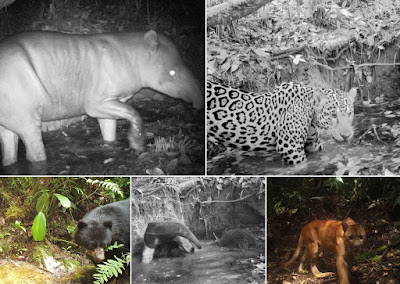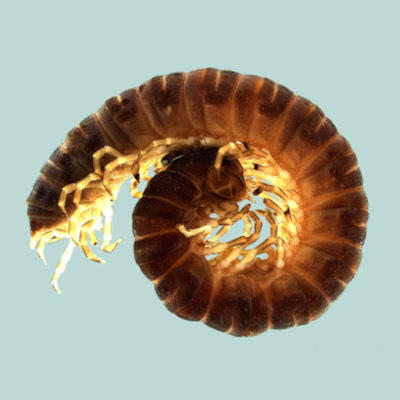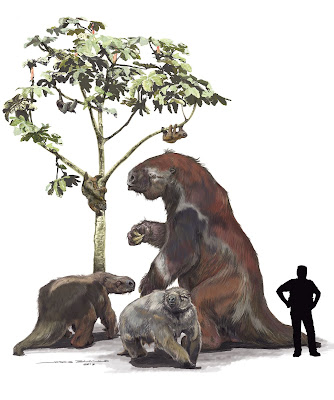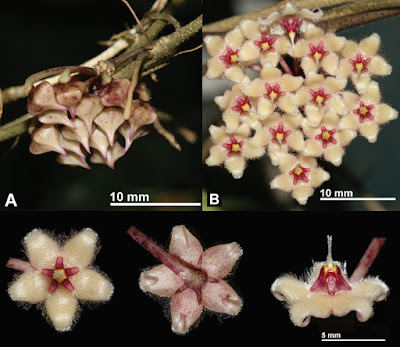[Most Recent Entries] [Calendar View]
Friday, June 21st, 2019
| Time | Event | ||||||
| 1:59a | [Conservation / Mammalogy • 2019] Camera Trapping reveals A Diverse and Unique High-elevation Mammal Community Under Threat
Abstract The Cerros del Sira in Peru is known to hold a diverse composition of endemic birds, amphibians and plants as a result of its geographical isolation, yet its mammalian community remains poorly known. There is increasing awareness of the threats to high-elevation species but studying them is often hindered by rugged terrain. We present the first camera-trap study of the mammal community of the Cerros del Sira. We used 45 camera traps placed at regular elevational intervals over 800–1,920 m, detecting 34 medium-sized and large mammal species. Eight are listed as threatened on the IUCN Red List, three are categorized as Data Deficient and one is yet to be assessed. Although other authors have reported that the upper elevations of the Cerros del Sira are free from hunting, we found evidence of hunting activity occurring above 1,400 m, and inside the core protected area. In addition to this direct evidence of hunting, recent information has identified significant amounts of canopy loss in the northern reaches of the core zone. Despite widespread ecological degradation in the surrounding lowlands, the high-elevation areas of the Cerros del Sira still maintain a unique assemblage of lowland and highland tropical rainforest mammals. It has been assumed that the Cerros del Sira and other similar remote locations are safe from disturbance and protected by their isolation but we suggest this is an increasingly dangerous assumption to make, and secure protection strategies need to be developed. Keywords: Camera traps, El Sira, habitat loss, hunting, oncilla, Leopardus tigrinus, Peru, spectacled bear, Tremarctos ornatus
Ruthmery Pillco Huarcaya, Christopher Beirne, Shirley Jennifer Serrano Rojas and and Andrew Whitworth. 2019. Camera Trapping reveals A Diverse and Unique High-elevation Mammal Community Under Threat. Oryx. First View. DOI: 10.1017/S0030605318001096 A unique high-elevation mammal community under threat | ||||||
| 2:43a | [Diplopoda • 2019] The Millipede Genus Antichiropus (Polydesmida: Paradoxosomatidae), Part 3: Species of the Pilbara Bioregion of Western Australia
Abstract The species of the millipede genus Antichiropus Attems, 1911 found in the Pilbara region of Western Australia are reviewed, and 33 new species are described. The new species are: A. anguinus Car, n. sp., A. antius Car, n. sp., A. apricus Car, n. sp., A. cirratus Car, n. sp., A. confragus Car, n. sp., A. cristatus Car, n. sp., A. cucumeraceous Car, n. sp., A. cunicularis Car, n. sp, A. echinus Car, n. sp., A. filiolus Car, n. sp., A. forcipatus Car, n. sp., A. georginae Car, n. sp., A. gibbus Car, n. sp., A. hystricosus Car, n. sp., A. julianneae Car, n. sp., A. literulus Car, n. sp., A. lucyae Car, n. sp., A. nicholasi Car, n. sp., A. nimbus Car, n. sp., A. patriciae Car, n. sp., A. pendiculus Car, n. sp., A. picus Car, n. sp., A. procerus Car, n. sp., A. quaestionis Car, n. sp., A. rupinus Car, n. sp., A. salutus Car, n. sp., A. servulus Car, n. sp., A. simmonsi Car, n. sp., A. sloanae Car, n. sp., A. spathion Car, n. sp., A. uvulus Car, n. sp., A. verutus Car, n. sp. and A. vindicatus Car, n. sp.. The number of described Antichiropus species now stands at 72. Two species (A. julianneae Car, n. sp. and A. pendiculus Car, n. sp.) lack one diagnostic feature of the genus, namely a solenomere process, but are included here because they conform to the genus definition in all other characters. We also obtained sequence data from four mitochondrial genes (cytochrome c oxidase subunit 1 [COI], cytochrome c oxidase subunit 3 [COIII], cytochrome B [CytB], and 12S rRNA [12S]), and one nuclear gene (28S rRNA [28S]) for 19 species. Three main clades were recovered: one in the northern Pilbara, one in the southern Pilbara, and one just outside the south-western margin of the Pilbara. Keywords: Myriapoda, native millipedes, Western Australia, new species, taxonomy Catherine A. Car, Mark S. Harvey, Mia J. Hillyer and Joel A. Huey. 2019. The Millipede Genus Antichiropus (Diplopoda: Polydesmida: Paradoxosomatidae), Part 3: Species of the Pilbara Bioregion of Western Australia. Zootaxa. 4617(1); 1-71. DOI: 10.11646/zootaxa.4617.1.1 | ||||||
| 9:28a | [Mammalogy • 2019] Palaeoproteomics resolves Sloth relationships Abstract The living tree sloths Choloepus and Bradypus are the only remaining members of Folivora, a major xenarthran radiation that occupied a wide range of habitats in many parts of the western hemisphere during the Cenozoic, including both continents and the West Indies. Ancient DNA evidence has played only a minor role in folivoran systematics, as most sloths lived in places not conducive to genomic preservation. Here we utilize collagen sequence information, both separately and in combination with published mitochondrial DNA evidence, to assess the relationships of tree sloths and their extinct relatives. Results from phylogenetic analysis of these datasets differ substantially from morphology-based concepts: Choloepus groups with Mylodontidae, not Megalonychidae; Bradypus and Megalonyx pair together as megatherioids, while monophyletic Antillean sloths may be sister to all other folivorans. Divergence estimates are consistent with fossil evidence for mid-Cenozoic presence of sloths in the West Indies and an early Miocene radiation in South America. Samantha Presslee, Graham J. Slater, François Pujos, Analía M. Forasiepi, Roman Fischer, Kelly Molloy, Meaghan Mackie, Jesper V. Olsen, Alejandro Kramarz, Matías Taglioretti, Fernando Scaglia, Maximiliano Lezcano, José Luis Lanata, John Southon, Robert Feranec, Jonathan Bloch, Adam Hajduk, Fabiana M. Martin, Rodolfo Salas Gismondi, Marcelo Reguero, Christian de Muizon, Alex Greenwood, Brian T. Chait, Kirsty Penkman, Matthew Collins and Ross D. E. MacPhee. 2019. Palaeoproteomics resolves Sloth relationships. Nature Ecology & Evolution. DOI: 10.1038/s41559-019-0909-z New research shakes up the sloth family tree phys.org/news/2019-06-sloth-family-tree.h | ||||||
| 9:46a | [Botany • 2019] Hoya of Sumatra (Apocynaceae, Asclepiadoideae), An Updated Checklist, Three New Species, and A New Subspecies
Abstract The list of the species of Hoya R.Br. occurring on the Indonesian island of Sumatra is updated and the type citation is clarified. Sixteen taxa are added to the latest checklist. Hoya danumensis subsp. amarii S.Rahayu & Rodda subsp. nov., H. rigidifolia S.Rahayu & Rodda sp. nov., H. solokensis S.Rahayu & Rodda sp. nov., and H. sumatrana S.Rahayu & Rodda sp. nov. are newly described. Hoya parviflora Wight, H. parvifolia Schltr., and H. purpureofusca Hook. are lectotypified. Keywords: Apocynaceae; Asclepiadaceae; Asclepiadoideae; Indonesia; Marsdenieae Checklist of the genus Hoya of Sumatra Class Magnoliopsida Brongn. Subclass Asteridae Takht. Order Gentianales Juss. ex Bercht. & J.Presl Family Apocynaceae Juss. Genus Hoya R.Br. Hoya andalensis Kloppenb. Hoya beccarii Rodda & Simonsson Hoya brooksii Ridl. Hoya campanulata Blume Hoya caudata Hook.f. Hoya coriacea Blume Hoya coronaria Blume Hoya danumensis subsp. amarii S.Rahayu & Rodda subsp. nov. Etymology The new species is named after Amar Husein Sitompul, who collected the type specimen. Notes Hoya danumensis subsp. amarii subsp. nov. can be separated from H. danumensis Rodda & Nyhuus (2009) subsp. danumensis because of the shape and size of the corolla that is shallowly campanulate, 20–23 mm in diameter and deeply campanulate, vs 25–35 mm in the latter; in the shape and size of the corona lobes that are ovate-oblong and 5.5–6 × 2.4–2.6 mm in H. danumensis subsp. danumensis vs ovate and 4.5–5 × 2.3–2.5 mm in the new subspecies. Hoya deykeae T.Green Hoya diversifolia Blume Hoya elliptica Hook.f. Hoya fauziana subsp. angulata Rodda, A.L.Lamb, Gokusing & S.Rahayu Blumea 63: 144 (Rodda et al. 2018). Hoya finlaysonii Wight Hoya forbesii King & Gamble Hoya glabra Schltr. Hoya imperialis Lindl. Hoya kastbergii Kloppenb. Hoya lacunosa Blume Hoya lasiantha (Korth. ex Blume) Miq. Hoya latifolia G.Don Hoya mitrata Kerr nom. cons. Hoya multiflora Blume Hoya obtusifolia Wight Hoya omlorii (Livsh. & Meve) L.Wanntorp & Meve Hoya parviflora Wight Hoya parvifolia Schltr. Hoya purpurascens Teijsm. & Binn. Hoya purpureofusca Hook. Hoya revoluta Wight ex Hook.f. Hoya rhodostele Ridl. Hoya rigidifolia S.Rahayu & Rodda sp. nov. Etymology The new species is named for its rigid and stiff leaves. Notes Hoya rigidifolia sp. nov. flowers only open for a single day. The flowers of H. finlaysonii are also open for a single day and have a similar flower morphology (rotate corolla, ovoid corona lobes of similar size). Both species are, however, easily separated based on leaf characters. Hoya finlaysonii has lanceolate to oblong leaves with pinnate venation, usually darker than the rest of the lamina; H. rigidifolia sp. nov. also has pinnate venation, but additionally it has two basal secondary veins running along the entire length of the lamina. The leaf venation of H. erythrina Rintz (1978) is similar to that of H. rigidifolia sp. nov.; however, both species can be separated based on flower charaters: H. erythrina has flowers with corolla > 15 mm in diameter when flattened, long-pubescent inside, and lasting > 2 days, while H. rigidifolia sp. nov. has flowers with corolla < 12 mm in diameter when flattened, glabrous inside, and lasting one day. Hoya rintzii Rodda, Simonsson & S.Rahayu Hoya rundumensis (T.Green) Rodda & Simonsson Hoya sarcophylla Ridl. Hoya scortechinii King & Gamble Hoya sigillatis T.Green subsp. sigillatis Hoya solokensis S.Rahayu & Rodda sp. nov. Etymology The new species is named after the collection locality in Solok, Sumatra. Notes Hoya solokensis sp. nov. is one of the few species of Hoya that exhibits a non-climbing habit but is instead an epiphytic shrub. It is morphologically similar to H. papaschonii Rodda (Rodda & Ercole 2014), a species only found in southern Thailand. Both species share a shrubby habit, short-lived peduncles, and flowers with a tubular corolla. However, H. papaschonii has the free part of the corolla lobes mostly held upright, while in H. solokensis sp. nov. the lobes are spreading; furthermore, the corona of H. papaschonii has both staminal and interstaminal elements while H. solokensis sp. nov. only has a staminal corona. Another species with a tubular corolla is H. telosmoides Omlor (1996) from Borneo, that is, however, a climber. The flowers of H. solokensis sp. nov. superficially resemble those of the Bornean H. hamiltoniorum A.L.Lamb, Gavrus, Emoi & Gokusing (Lamb et al. 2014) because both species have the free part of the corolla lobes spreading, however H. hamiltoniorum is a climber and its inner apex of the corona lobe is bifid, while the apex of the inner lobes of H. solokensis sp. nov. is entire. Hoya sumatrana S.Rahayu & Rodda sp. nov Etymology The new species is named after the Indonesian island of Sumatra. Notes Hoya sumatrana sp. nov. is a new species in H. sect. Peltostemma Schlechter (1916: 14), characterized by upright corona lobes, long linear anther appendages extending well above the style-head and pollinaria with well developed caudicle wings. This section includes six species, two of which, H. soidaoensis Kidyoo (2013) and H. phuwuaensis Kidyoo (2016), have been recently published. Hoya sumatrana sp. nov. can be separated from all other members of this section because its flowers are much smaller; for example, the corolla of H. sumatrana sp. nov. is 7–9 mm in diameter, while the corolla of the second smallest species, H. flagellata Kerr (1940: tab. 3407), is > 10 mm in diameter, as well as the corona of Hoya sumatrana sp. nov. is 2.8–3.2 mm in diameter, while that of H. flagellata is > 4 mm in diameter. Another useful character to separate H. sumatrana sp. nov. from all other members of the section is the inner corona lobe process, that is bilobed in H. sumatrana sp. nov., while the other species have acute or rounded processes. Hoya uncinata Teijsm. & Binn. Hoya vitellinoides Bakh.f. Hoya vitellina Blume Hoya wrayi King & Gamble Discussion: Since Rahayu & Wanntorp (2012), the Sumatran specimens identified as H. erythrostemma Kerr (1939) have been identified as H. rintzii, H. micrantha Hook.f. (Hooker 1883) has been re-determined as H. rundumensis, and H. verticillata was reported as H. parasitica Wall. ex Wight (1834). Nine species have been added to the inventory of Sumatran Hoya (Rahayu & Wanntorp 2012), all described based on Sumatran collections. These are H. andalensis, H. beccarii, H. brooksii, H. deykeae, H. omlorii, H. parvifolia, H. purpurascens, H. sarcophylla, and H. uncinata. Hoya variifolia is considered a new synonym of H. parviflora. Two further species, H. glabra Schltr (Schlechter 1908) and H. kastbergii, are newly recorded. The total count of taxa of Hoya known from Sumatra now stands at 43 and includes 41 species and two subspecies Sri Rahayu and Michele Rodda. 2019. Hoya of Sumatra, An Updated Checklist, Three New Species, and A New Subspecies. European Journal of Taxonomy. 508; 1–23. DOI: 10.5852/ejt.2019.508 |
| << Previous Day |
2019/06/21 [Calendar] |
Next Day >> |










